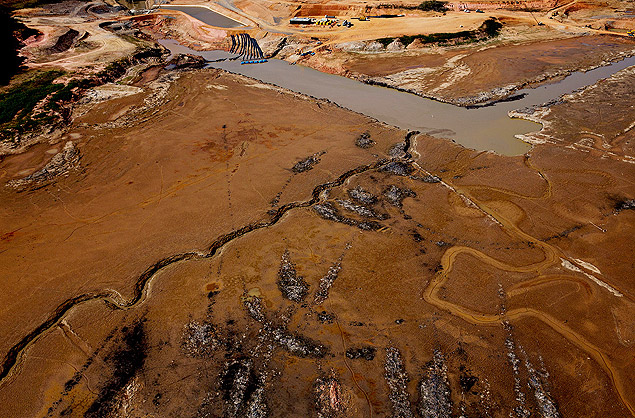Latest Photo Galleries
Brazilian Markets
10h02 Bovespa |
-0,04% | 124.689 |
16h43 Gold |
0,00% | 117 |
10h03 Dollar |
+0,37% | 5,1681 |
16h30 Euro |
+0,49% | 2,65250 |
ADVERTISING
Multimedia Article: Despite Wealth, Brazil Isn't Ready to Deal with Water Problems
09/15/2014 - 09h00
Advertising
MARCELO LEITE
FROM SÃO PAULO
With 12% to 16% of the fresh water available on the planet, Brazil is certainly a rich country in that respect, which nature provides the population and the economy for free.
Multimedia Article: The future of Water Resources in Brazil
Each inhabitant can count on more than 43,000 m3 of water sources a year. But only 0.7% of that total is used.
Nations like Algeria and regions such as the Palestine, by contrast, use nearly half of the available water resources. Saudi Arabia and the United Arab Emirates have to obtain such resource by desalinizing seawater.
However, Brazil's situation only seems to be comfortable. The first problem: water is abundant in places where there aren't many people and in more preserved forests, such as the Amazon.
On the coast, and in regions such as the Southeast and the Northeast (70% of the population), various urban centers have already been facing supply difficulties - worsened by droughts like that of São Paulo this year and the northeastern semi-arid region in 2012-13.
With the growing emissions of carbon dioxide (CO2) and other greenhouse gases - products of fuel burning and other activities - the Earth's atmosphere retains more heat from the sun close to the surface and makes the temperature of air masses rise.
The energy in the atmosphere fuels winds and storms. With the additional radiation, the circulation patterns change, and some regions can undergo more frequent and more severe droughts, while others are subject to floods, which can also become more intense, during unusually heavy rainfall.
If the future weather simulations are right, of course.
MORE HEAT, LESS RAIN
The Brazilian Panel on Climate Change (PBMC), a committee comprised of some of the country's top specialists in climatology, has made some forecasts on the probable changes in various regions.
The most reliable - those to occur by the end of this century - are for the Amazon (an increase in temperature between 5°C and 6°C and a 40% to 45% decline in precipitation, a 10% reduction in rainfall in the next five years), for the semi-arid regions in the Northeast (respectively 3.5ºC to 4.5°C and -40% to -50%), and for the grasslands in the South (a 2.5°C to 3°C in temperature increase and a 35% to 40% increase in rainfall).
For the other regions, reliability was considered low. For the southeastern Atlantic Forest, the PBMC forecasts a rise of 25% to 30% in rainfall and 2.5°C to 3°C in temperature.
In other words, it's impossible to say for sure that the recent droughts in the Southeast and the Northeast - or the terrible floods in Rondônia this year - are directly connected to global or regional climate change. But the opposite cannot be excluded.
On the other hand, it is certain that these problems, as well as the billion-dollar losses they cause, are a good example of what we can expect in the coming decades if global warming worsens.
Translated by THOMAS MUELLO
Read the article in the original language
| Lalo de Almeida/Folhapress | ||
 |
||
| Various urban centers have already been facing water supply difficulties |



